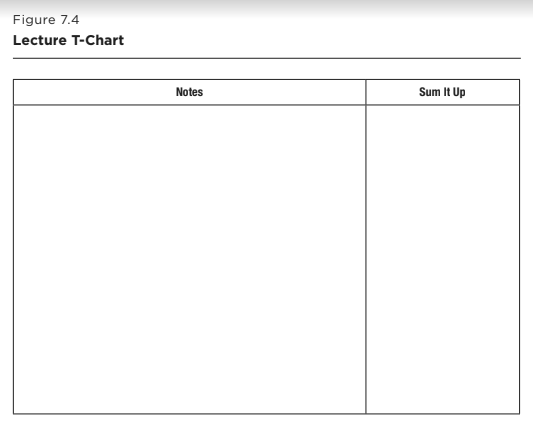Lecture T-Chart
What It Is
A Lecture T-Chart can be very useful to students by allowing them to review their notes and sum them up on the right-hand side of the T-chart using words or a Quick-Draw. They can take notes in the left-hand column and then, during a pause point, sum them up in the right-hand column. The T-charts can also serve as a reminder to teachers to pause and give students time to summarize their thinking.
How It Works
- During the presentation, students take notes in the left-hand column.
- Periodically stop (at several pause points) to allow students to read over their notes and sum them up in the right-hand column.
- Allow time for pair-sharing summaries and for recording questions on index cards or in a Chalkboard Splash.
- Allow time to answer any questions that students have.
How to Ensure Higher-Order Thinking
Go a step further: after you ask students to sum up the most important concepts discussed, ask them to predict what’s coming next in the presentation. Or ask students to refl ect on what they think the implications of the content might be for their world today. Ask students to designate a spot in their notes to address the “So what?” and the relevance question. For example, “Why do you think invasive species matter to us?” Give them time to share their thoughts in small groups before addressing this point in the presentation.

Source
Himmele P., and Himmele, W. Total Participation Techniques: Making Every Student an Active Learner. ASCD, 2017, pp.100-102.
